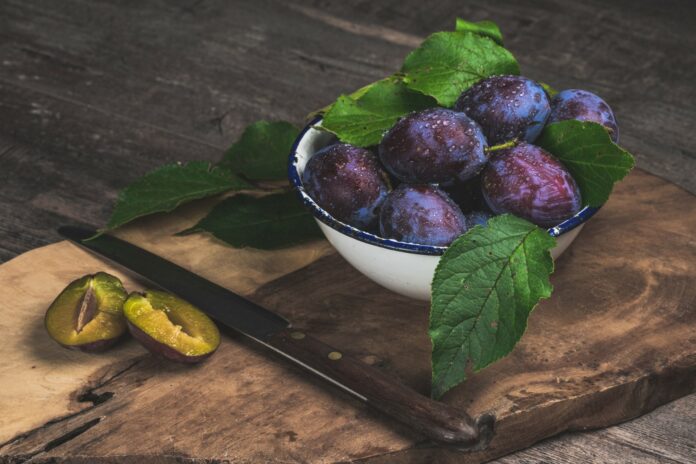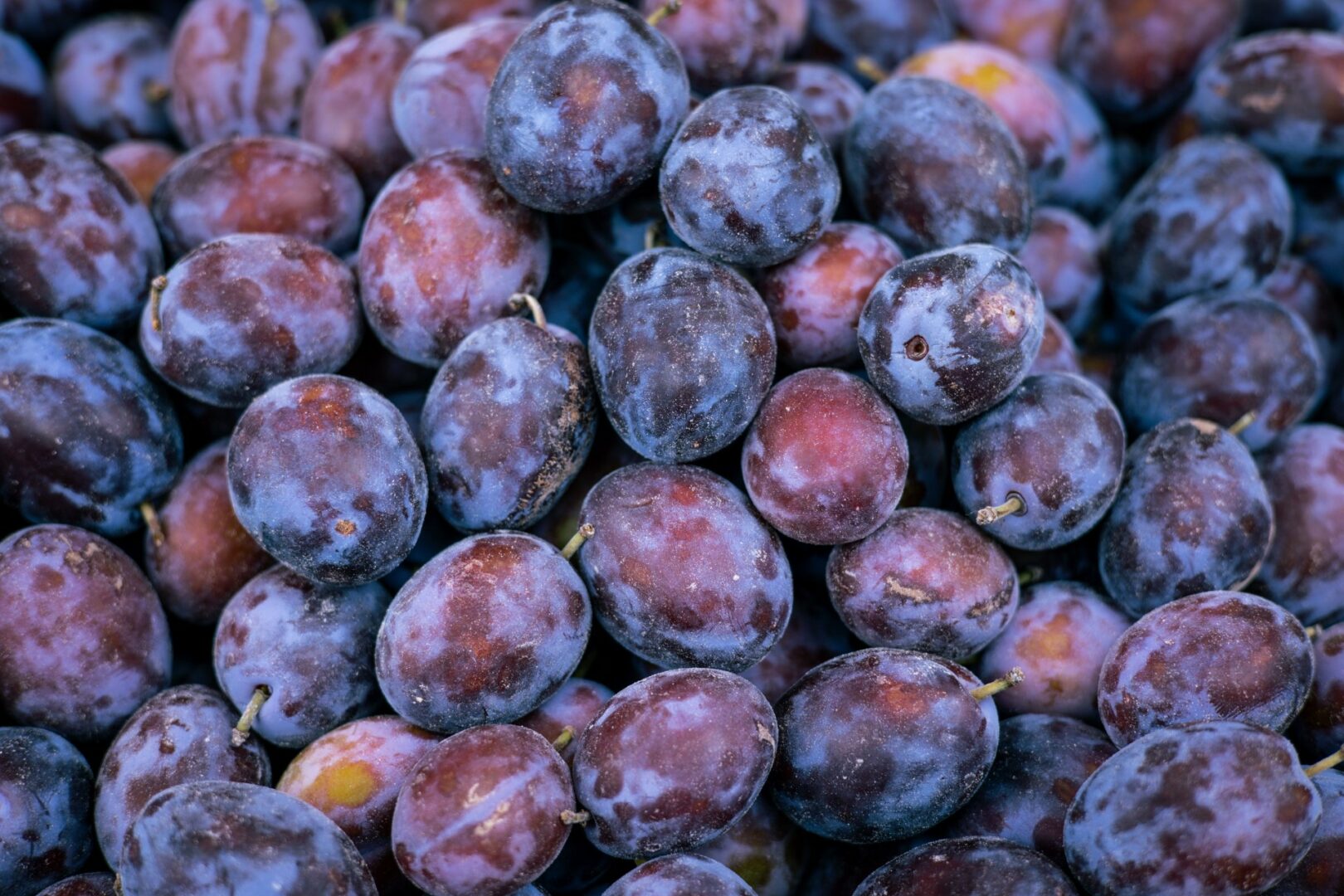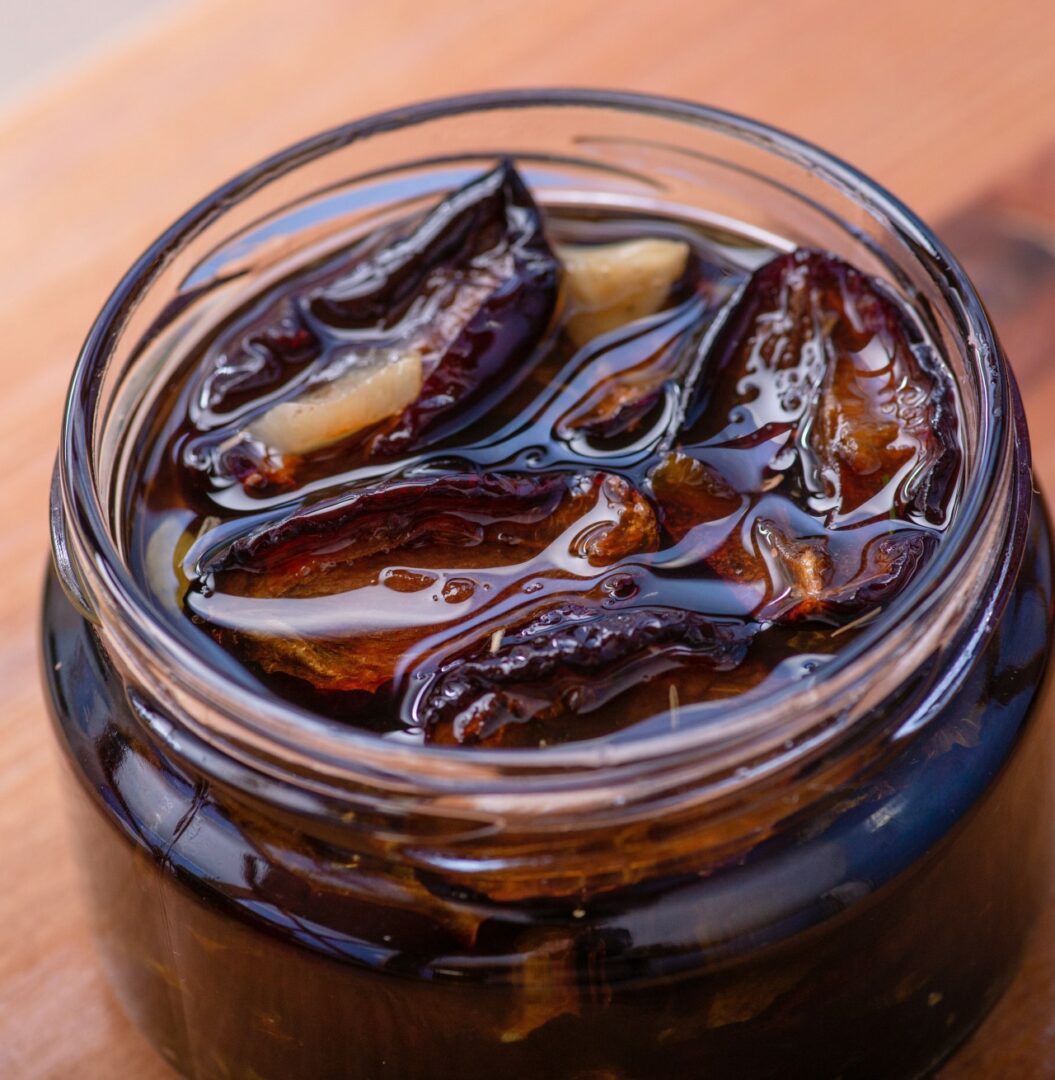Plums are one of the traditional and widely grown fruits in Slovakia. The local conditions suit them and bring a rich harvest of tasty fruits yearly. Plums can be used in the usual but also less typical way.
A popular but not so well-known delicacy is plum klevela (a thick plum compote). There are many easy recipes on the internet. You can also use freshly picked plums to prepare delicious plum chutney or plum nutella, which, if successful, tastes really great. You can also try to make plum crumble, original sorbet, or plum brownies. However, many people are especially fond of traditional plum sourdough cake, sheet cake, plum dumplings, or homemade plum jam. Plum poppy strudel, plum muffins, or side dish sauce from this fruit also taste incredible. However, plum fruits can also be part of meat dishes. They have a unique flavor when served, for example, a game or duck.
Health Benefits
Plums taste fresh, but you can’t enjoy them this way all year round, so they tend to be canned or dried. Although you can buy them in the supermarket today during the season, there is nothing like those you can grow in the garden or buy at the market from a local grower. In our country’s conditions, many varieties of plums thrive, usually from mid-July to mid-October. Eating plums is highly beneficial. They are characterized by a higher content of B vitamins, especially vitamin E. The fruits contain many minerals, especially calcium, sulfur, magnesium, potassium, and phosphorus. The pectin and fiber content are also remarkable, making this fruit a great helper in maintaining a healthy gut. In turn, a higher content of vitamin E and some minerals contribute to a healthier heart and improve the entire cardiovascular system. However, not everyone tolerates plums. Many people feel full or bloated after eating them.
Opportunity for a New Tree
Did you know that Slovakia’s first historical records of plum cultivation date back to the 15th century? The fruit species has also gained popularity in this country because it quickly adapted to the conditions, was never too difficult to grow, and reproduced easily. Plum trees were once part of gardens and nature. There are many varieties of plum trees. The newer ones are characterized by the early blooming, higher disease resistance, and pests are a guarantee of a rich harvest. Plums thrive best in warmer locations that are sheltered from northwest or northeast winds. Places with an altitude of up to 350 m above sea level are ideal. It has also been found that plums planted on a flat or moderate slope, which is oriented to the west or southwest, provide the most thriving harvest. Autumn is the best time to plant a young plum tree. Therefore, if you are thinking about your own plum and have a place for it by the house, take advantage of the favorable time for planting.
Plum Brandy
Common purple plum is one of the most famous and very popular traditional varieties. It was bred in Romania Transylvania, and many people claim it is the queen among plums, at least in terms of the taste of the fruit. It has an excellent aroma. However, paradoxically, the cultivation of this variety is gradually becoming a thing of the past in our region. It is attacked by a dreaded disease, plum pox. However, breeders have been working hard to breed a variety that would replace it. In the past, it was this variety whose fruits were also widely used to produce traditional plum brandy.
Text: Daniel Košťál, photo: pexels.com

















